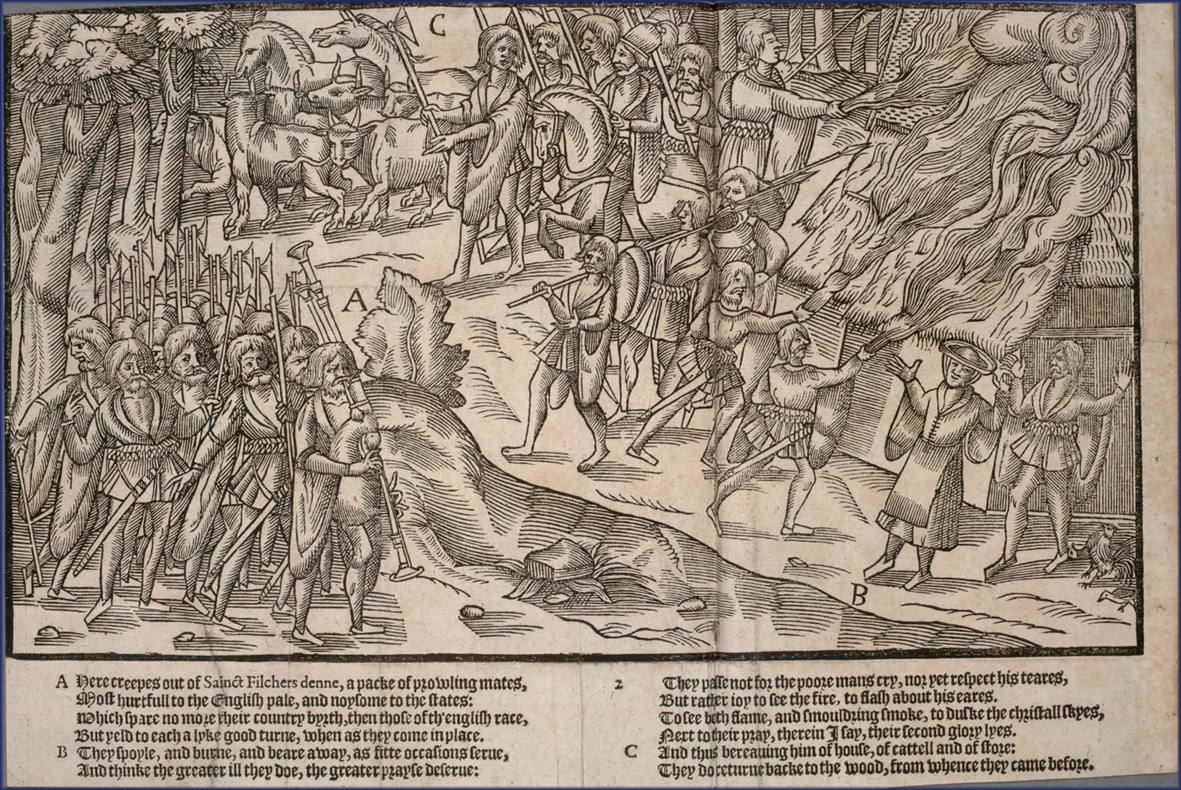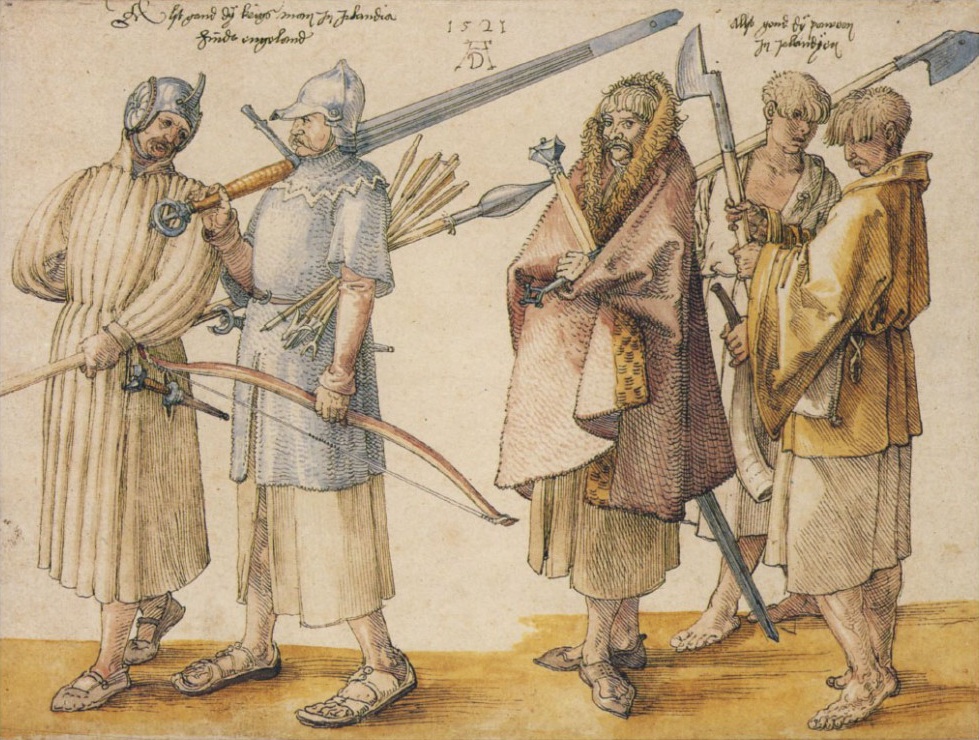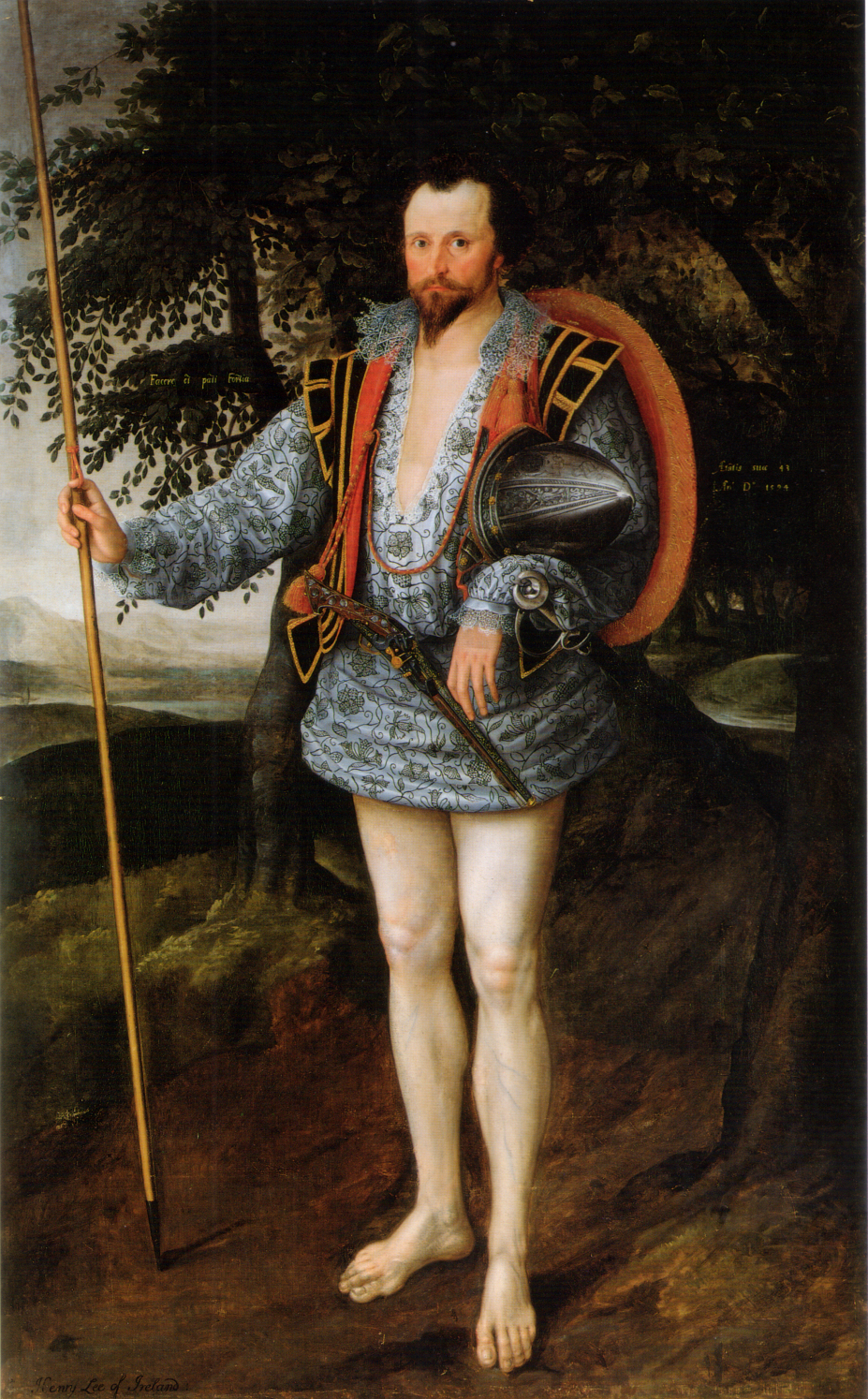Kern (soldier) on:
[Wikipedia]
[Google]
[Amazon]
 A kern was a
A kern was a

 Kerns notably accompanied bands of the
Kerns notably accompanied bands of the
 A kern was a
A kern was a Gaelic
Gaelic is an adjective that means "pertaining to the Gaels". As a noun it refers to the group of languages spoken by the Gaels, or to any one of the languages individually. Gaelic languages are spoken in Ireland, Scotland, the Isle of Man, an ...
warrior, specifically a light infantry
Light infantry refers to certain types of lightly equipped infantry throughout history. They have a more mobile or fluid function than other types of infantry, such as heavy infantry or line infantry. Historically, light infantry often foug ...
man, in Ireland in the late Middle Ages.
Etymology
The word ''kern'' is ananglicisation
Anglicisation is the process by which a place or person becomes influenced by English culture or British culture, or a process of cultural and/or linguistic change in which something non-English becomes English. It can also refer to the influe ...
of the Middle Irish
Middle Irish, sometimes called Middle Gaelic ( ga, An Mheán-Ghaeilge, gd, Meadhan-Ghàidhlig), is the Goidelic language which was spoken in Ireland, most of Scotland and the Isle of Man from AD; it is therefore a contemporary of late Old Engl ...
word ''ceithern'' or ''ceithrenn'' meaning a collection of persons, particularly fighting men. An individual member is a ''ceithernach''. The word may derive from a conjectural proto-Celtic
Proto-Celtic, or Common Celtic, is the ancestral proto-language of all known Celtic languages, and a descendant of Proto-Indo-European. It is not attested in writing but has been partly reconstructed through the comparative method. Proto-Celt ...
word *''ketern''ā, ultimately from an Indo-European
The Indo-European languages are a language family native to the overwhelming majority of Europe, the Iranian plateau, and the northern Indian subcontinent. Some European languages of this family, English, French, Portuguese, Russian, Du ...
root meaning a chain. Kern was adopted into English as a term for a Gaelic soldier in medieval Ireland and as ''cateran
The term cateran (from the Gaelic ''ceathairne'', a collective word meaning "peasantry") historically referred to a band of fighting men of a Scotland Highland clan; hence the term applied to the Highland, and later to any, marauders or cattle ...
'', meaning 'Highland marauder', 'bandit'. The term ''ceithernach'' is also used in modern Irish for a chess
Chess is a board game for two players, called White and Black, each controlling an army of chess pieces in their color, with the objective to checkmate the opponent's king. It is sometimes called international chess or Western chess to dist ...
pawn
Pawn most often refers to:
* Pawn (chess), the weakest and most numerous piece in the game
* Pawnbroker or pawnshop, a business that provides loans by taking personal property as collateral
Pawn may also refer to:
Places
* Pawn, Oregon, an his ...
.
Military roles

 Kerns notably accompanied bands of the
Kerns notably accompanied bands of the mercenary
A mercenary, sometimes also known as a soldier of fortune or hired gun, is a private individual, particularly a soldier, that joins a military conflict for personal profit, is otherwise an outsider to the conflict, and is not a member of any ...
gallowglass
The Gallowglass (also spelled galloglass, gallowglas or galloglas; from ga, gallóglaigh meaning foreign warriors) were a class of elite mercenary warriors who were principally members of the Norse-Gaelic clans of Ireland between the mid 13t ...
es as their light infantry forces, where the gallowglass filled the need for heavy infantry
Heavy infantry consisted of heavily armed and armoured infantrymen who were trained to mount frontal assaults and/or anchor the defensive center of a battle line. This differentiated them from light infantry who are relatively mobile and l ...
. This two-tier "army" structure though should not be taken to reflect earlier Irish armies prior to the Norman invasions, as there were more locally trained soldiers filling various roles prior to this. The gallowglass largely replaced the other forms of infantry though, as more Irish began to imitate them, creating gallowglass of purely Irish origin.
Earlier, the Ceithern would have consisted of myriad militia
A militia () is generally an army or some other fighting organization of non-professional soldiers, citizens of a country, or subjects of a state, who may perform military service during a time of need, as opposed to a professional force of r ...
-type infantry, and possibly light horse, most likely remembered later in the "horse boys" that accompanied gallowglass and fought as light cavalry. They would be armed from common stock or by what they owned themselves, usually with swords, shields, bows, javelins and filled out numerous portions of an army, probably forming the vast bulk of most Gaelic forces. In the mid sixteenth century Shane O'Neill was known to have armed his peasantry and Hugh O'Neill, Earl of Tyrone
Hugh O'Neill ( Irish: ''Aodh Mór Ó Néill''; literally ''Hugh The Great O'Neill''; – 20 July 1616), was an Irish Gaelic lord, Earl of Tyrone (known as the Great Earl) and was later created ''The Ó Néill Mór'', Chief of the Name. O'Nei ...
, outfitted many of his Ceithernn with contemporary battle dress and weapons and drilled them as a professional force, complete with experienced captains and modern weapons.
;Military equipment and tactics
Jean Froissart (c. 1337–c. 1410) includes a description of the Irish wearing ‘very simple’ armour (perhaps leather or fabric forms of protection). Kerns were light troops who relied on speed and mobility, often utilising lightning strike
A lightning strike or lightning bolt is an electric discharge between the atmosphere and the ground. Most originate in a cumulonimbus cloud and terminate on the ground, called cloud-to-ground (CG) lightning. A less common type of strike, ground- ...
tactics as a force multiplier
In military science, force multiplication or a force multiplier is a factor or a combination of factors that gives personnel or weapons (or other hardware) the ability to accomplish greater feats than without it. The expected size increase req ...
to engage much larger formations. In the words of one writer, they were, "lighter and lustier than [English soldiers) in travail and footmanship". John Dymmok, who served in the retinue of the earl of Essex, Elizabeth I’s lord lieutenant of Ireland, provides the classic description of a kern equipped for war: ". . . a kind of footman, slightly armed with a sword, a target (round shield) of wood, or a bow and sheaf of arrows with barbed heads, or else three darts, which they cast with a wonderful facility and nearness, a weapon more noisome to the enemy, especially horsemen, than it is deadly". Kerns were armed with a sword (''claideamh''), long dagger (''scian''), Bow and arrow, bow (''bogha'') and a set of Javelin, javelins, or Dart (missile), darts (''ga'').
Kerns did not cling to their obsolete weapons and tactics but wholeheartedly and with great speed adopted weapons and military methodology of the continent, becoming heavily dependent upon firepower. However, they retained their original armaments and used them to great effect in areas where pike-and-shot formation was ineffective, such as woodland and dense scrub.
Woodkerns
Native Irish displaced by the Anglo-Norman invasion, operated as bandits in the forests of Ireland where they were known as "wood kerns" or ''Cethern Coille''. They were such a threat to the new settlers that a law was passed in 1297 requiring lords of the woods to keep the roads clear of fallen and growing trees, to make it harder for wood kerns to launch their attacks.In literature
Notably, Kerns appear in Shakespeare's '' Henry IV, Part 2'':Shakespeare mentions kerns (and gallowglasses) in his play ''Cardinal. My Lord of York, try what your fortune is. The uncivil kerns of Ireland are in arms, And temper clay with blood of Englishmen. To Ireland will you lead a band of men, Collected choicely, from each county some, And try your hap against the Irishmen?
Macbeth
''Macbeth'' (, full title ''The Tragedie of Macbeth'') is a tragedy by William Shakespeare. It is thought to have been first performed in 1606. It dramatises the damaging physical and psychological effects of political ambition on those w ...
'':
The merciless Macdonwald, Worthy to be a rebel, for to that The multiplying villainies of nature Do swarm upon him, from the Western isles Of kerns and gallowglasses is supplied Macbeth, Act I, Scene II
See also
*Fianna
''Fianna'' ( , ; singular ''Fian''; gd, Fèinne ) were small warrior-hunter bands in Gaelic Ireland during the Iron Age and early Middle Ages. A ''fian'' was made up of freeborn young males, often aristocrats, "who had left fosterage but had ...
References
{{reflist Military history of Scotland Military history of Ireland Medieval Ireland Military units and formations of the Middle Ages Scottish mercenaries